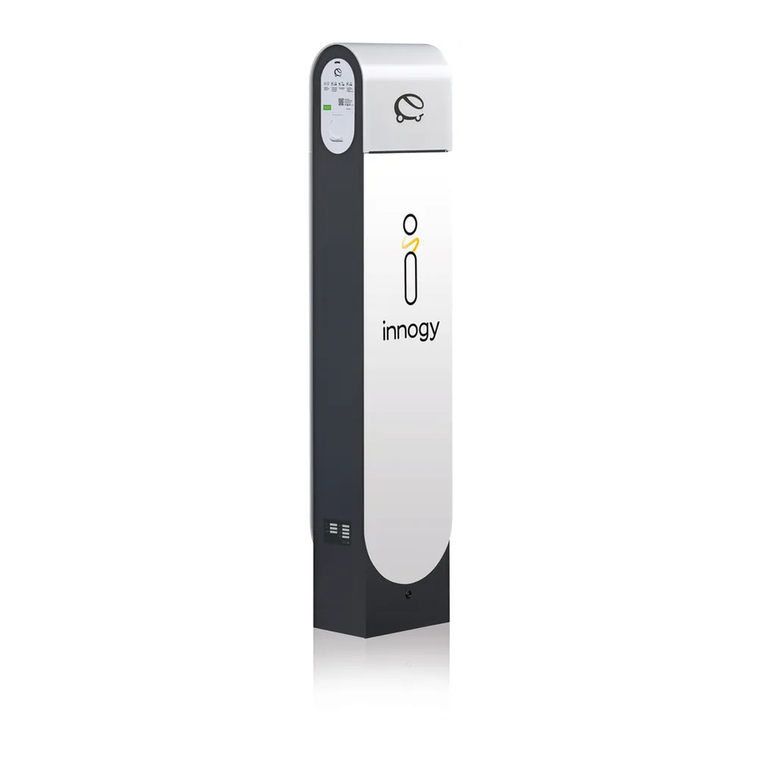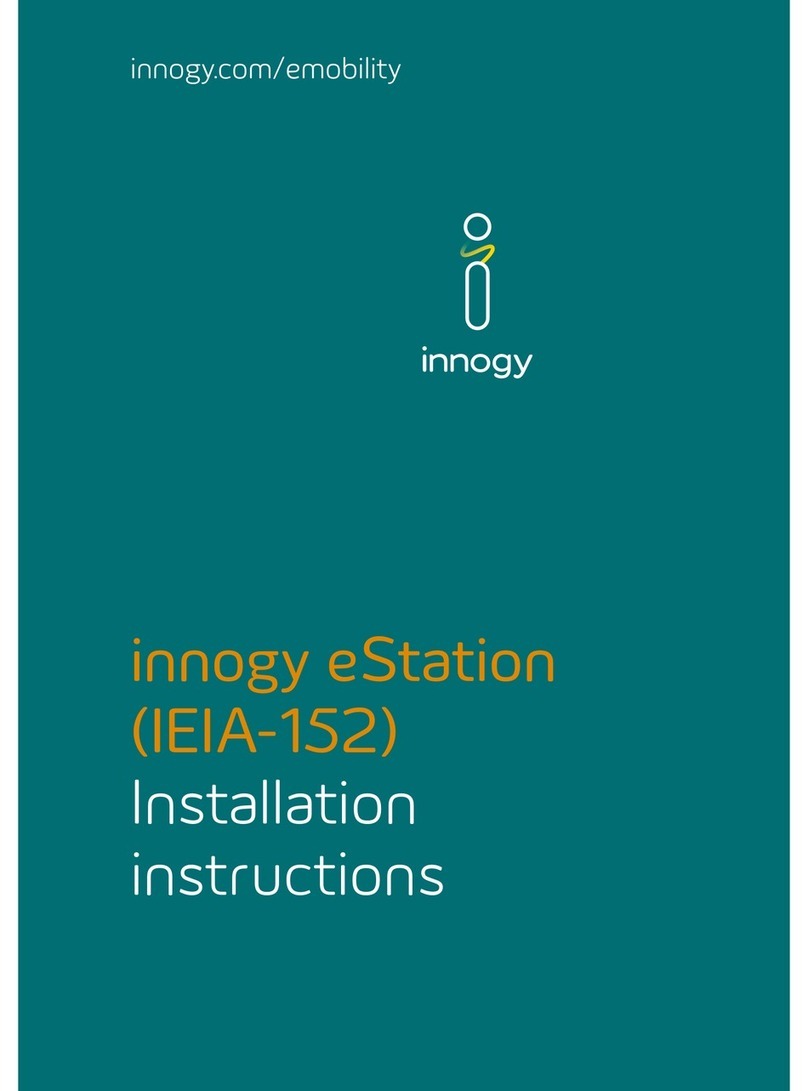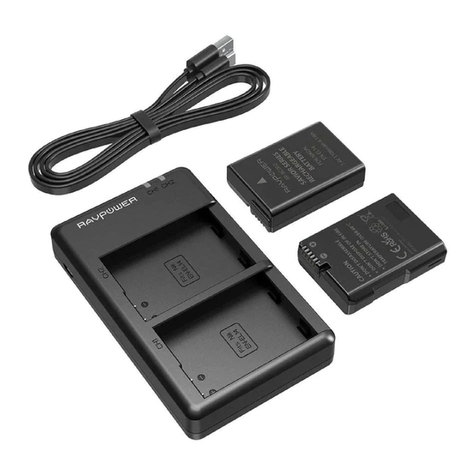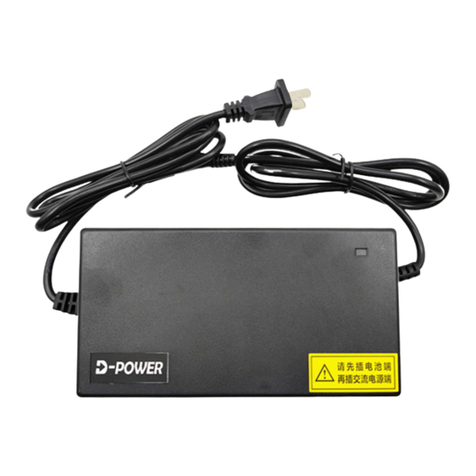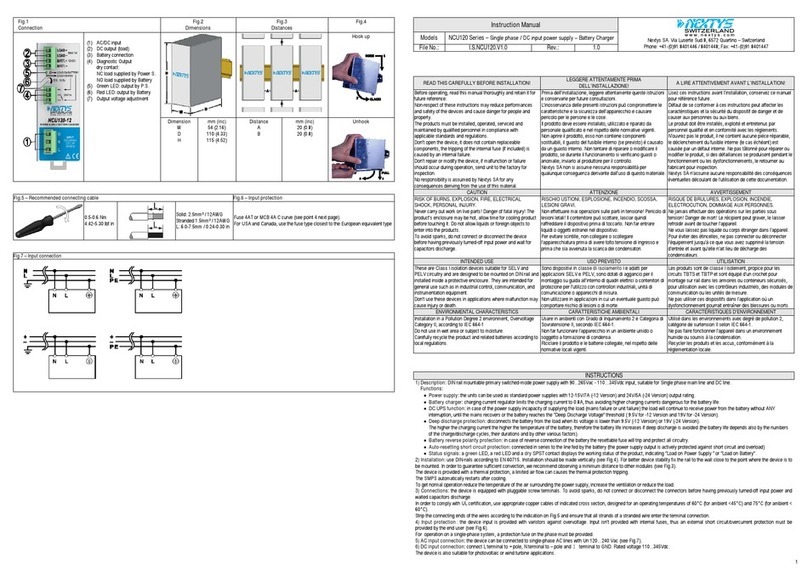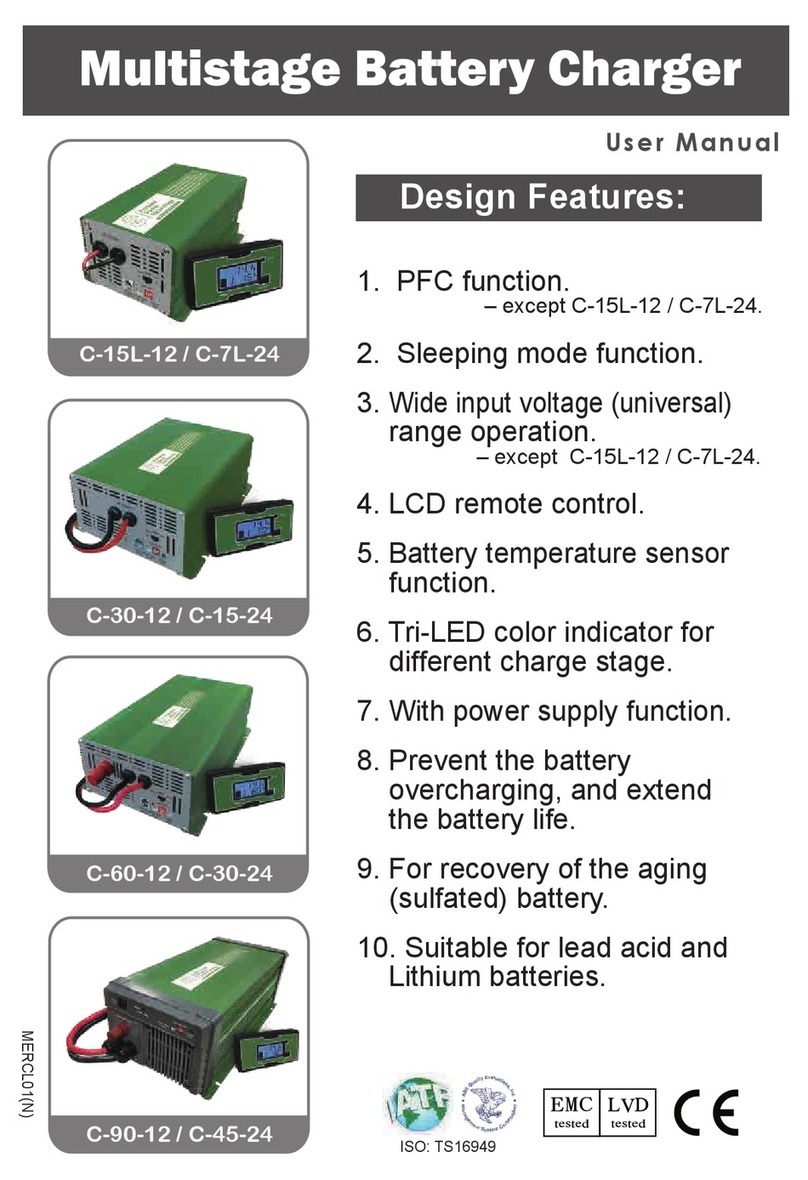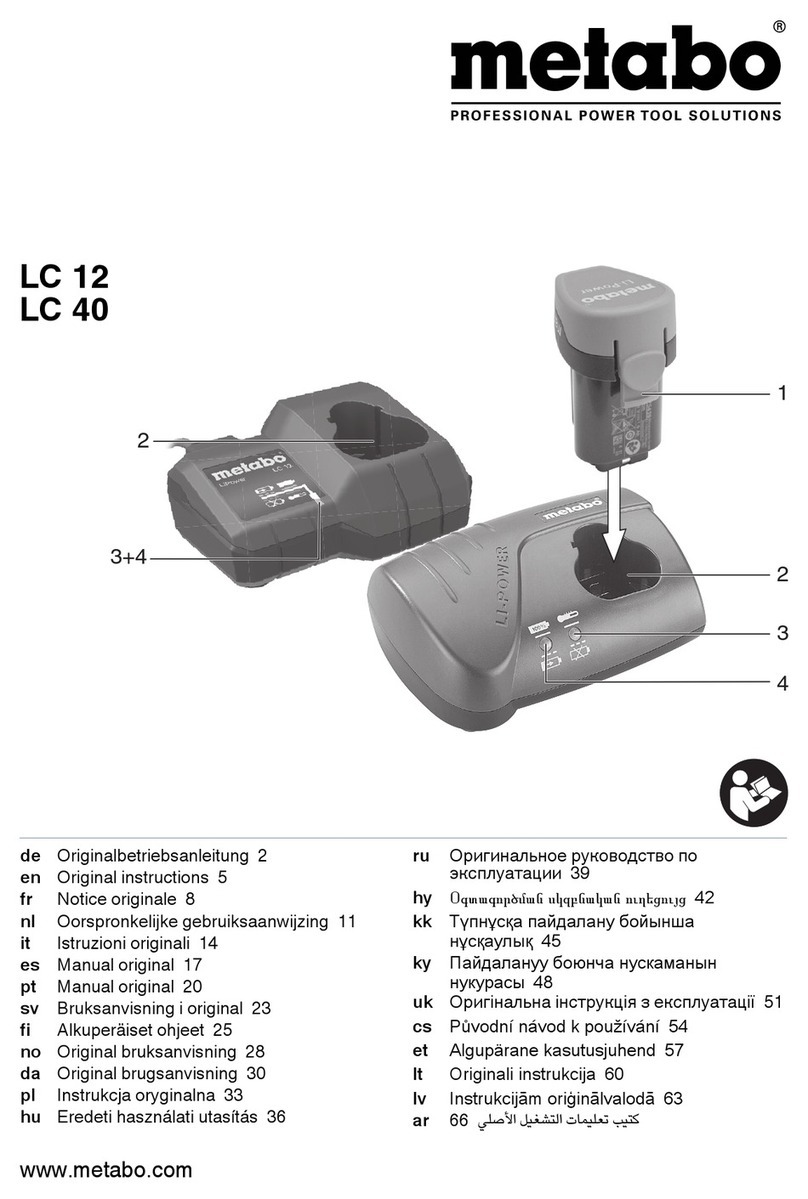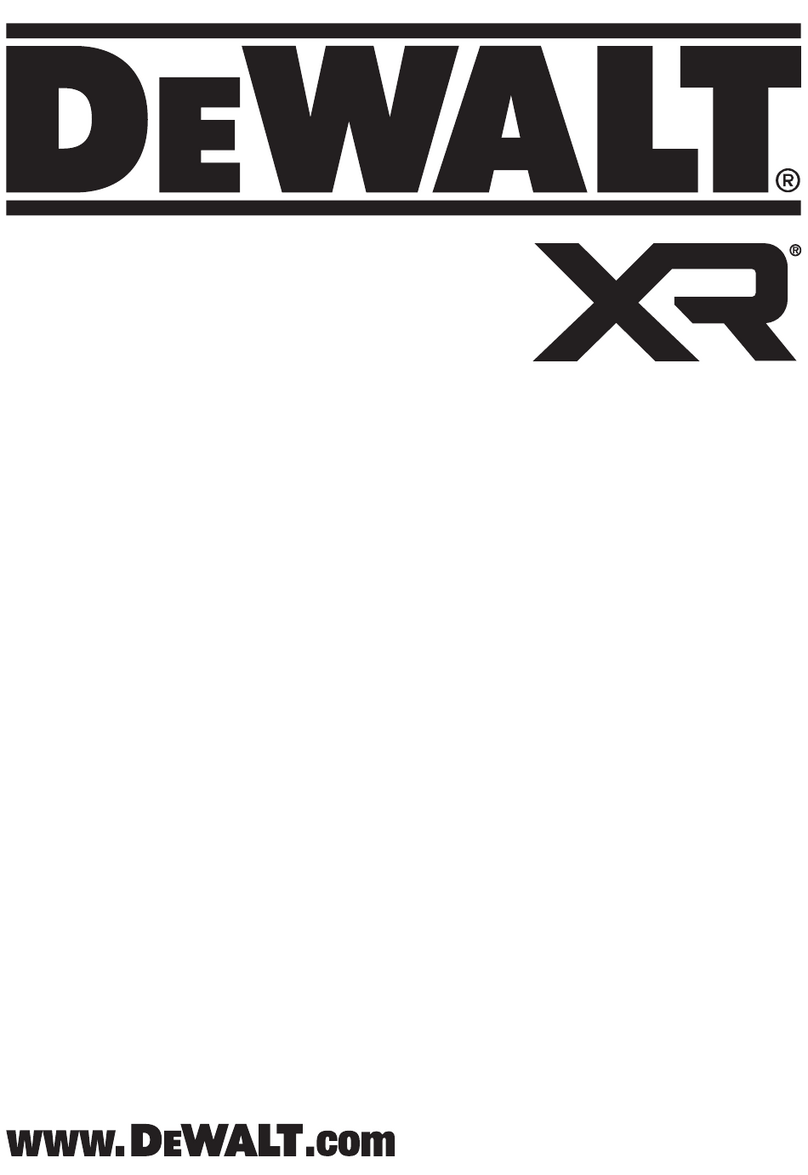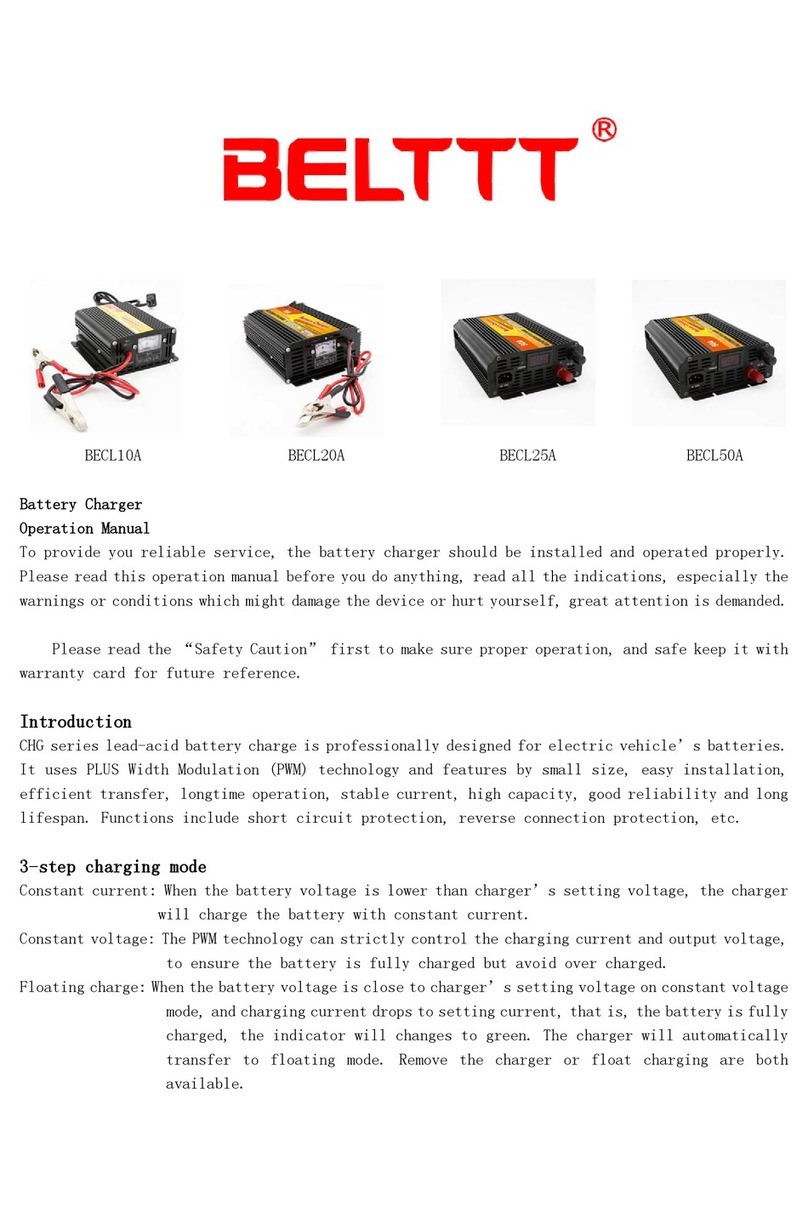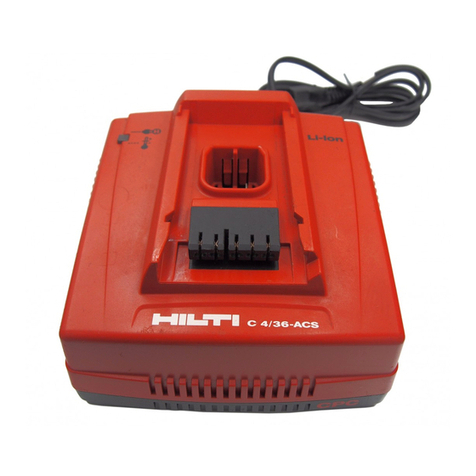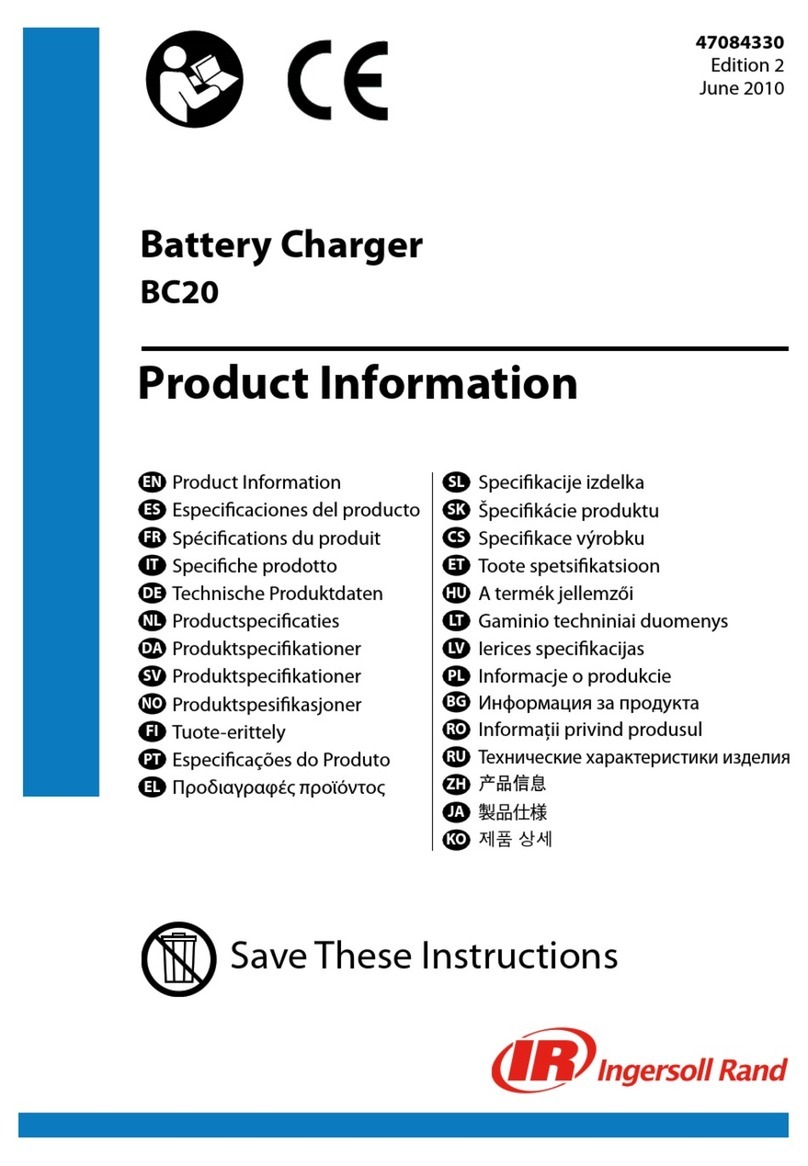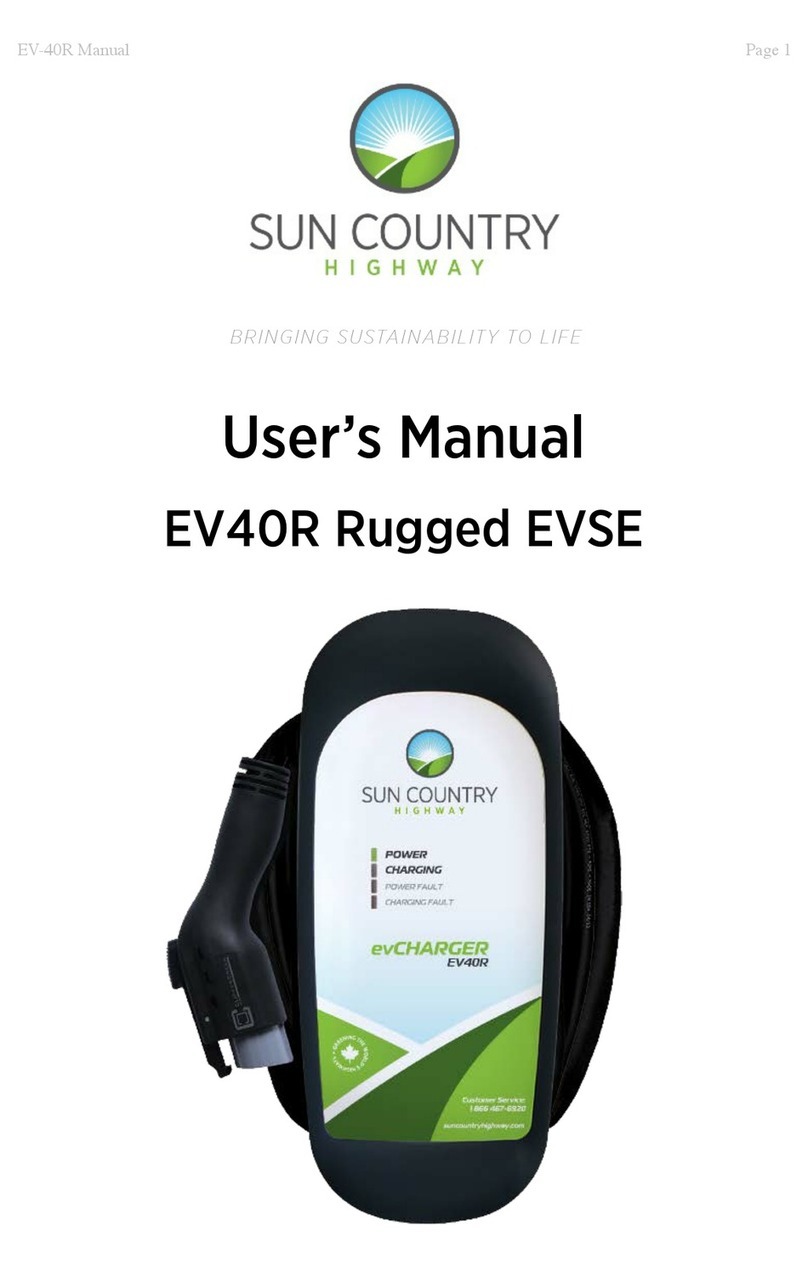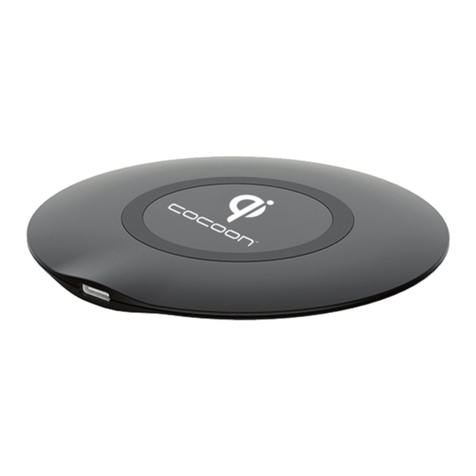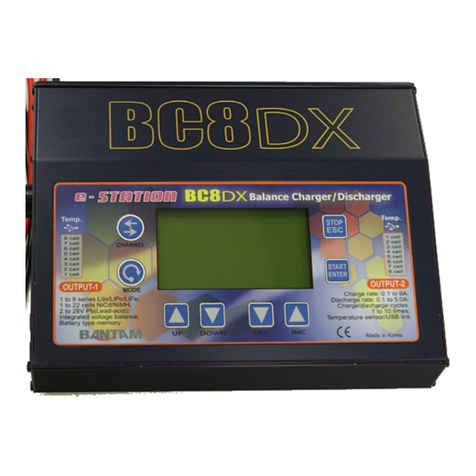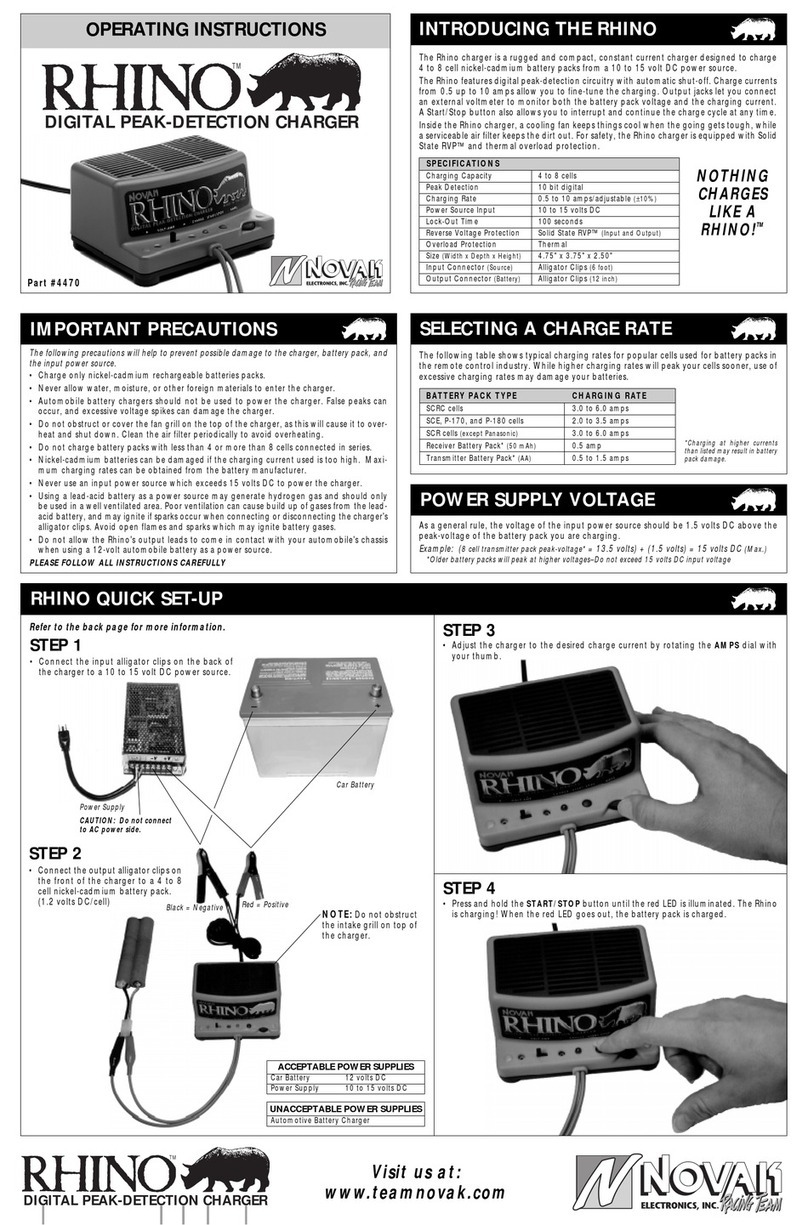Innogy eBox touch User manual

eBox touch
Instructions for use

Instructions for use
Fuelling becomes charging
Dear EV Driver,
innogy offers you modern, leading-edge
solutions for the fast charging of electric
vehicles. Thank you for buying the eBox
touch.
In order to commission your eBox, please
download the eCharge+ app. For all further
steps, please see the app.
eCharge+ app

Contents
Contents
Product subject to modification without prior
notice. This document might not contain the
latest changes to the product’s specifications
or processes described herein.
Safety information
Product overview
Clicking the eBox into the eClick
Commissioning via app
Charging
Troubleshooting
Specifications
Notes
Legal notice

Safety information
Safety information
Danger to life and limb
Warning of electrical voltage!
DANGER
Significant risk of
injury/material damage
Caution: Significant risk of
injury or material damage!
CAUTION
Information on optimising
the application
Observing this information
can improve the product’s
application.
HINWEIS
Danger
Turn off circuit before
remounting or
replacing the eBox.
Caution
The feet of the eBox
are sharp-edged.
Do not grip the eBox
by its feet.
Caution
The contents of
the delivery must
be checked for
completeness and
intactness.
Caution
Small parts dangerous
for children. Do not
install in the presence
of children.
Note
This is a CE-certified
product. All relevant
product standards and
rules and regulations
applicable to the
product are confirmed
in the product’s
EC Declaration of
Conformity.
Caution
Ensure that all
components are
dry throughout the
installation.
Caution
Check that the
warranty seal on
the back of the eBox
is intact. Do not
operate the product
unless the warranty
seal is undamaged.
Damaged warranty
seals void the
warranty.
Note
The eBox touch is a
maintenance-free
product. It does not
contain any reparable
parts or components.
Do not attempt any
repairs. If a malfunc-
tion persists, replace
the eBox.

About this document
These instructions for use describe how the
eBox touch is operated properly. The eBox must
be handled as described in these instructions
for use.
The eClick serves as a docking station, so
this must be installed before the eBox can be
mounted. This prior installation is described in
detail in the installation instructions provided
with the eClick and must be performed by a
qualified electrician.
Please refer to the above-said installation
instructions for the complete installation.
Your personal safety is assured and the
eBox functions correctly only when you follow
exactly the steps in these instructions for use.
Do not perform any work on the eBox when
this work is not described in these instructions
for use. When in doubt, consult a qualified
specialist.
In addition, use only accessory parts that
have been manufactured specifically for the
eBox.
Intended purpose
These instructions for use apply to the eBox
touch and to its use in Germany, Austria, and
Switzerland. Please note the safety standards
applying in the country of use.
eBox – intended use
The device is intended for use in the exterior
and interior area.
In public spaces, the operator must
ensure that these instructions remain
permanently legible. The operation of the
eBox presupposes knowledge of the
contents of these instructions.
This design is intended exclusively for
the charging of electric vehicles fitted with
a Type-2 plug (IEC 62196-2), a Type-1 plug
(SAE J1772-2009; possible only with the
variant socket on the eBox), and charging
current control via the pilot signal (IEC 61851-1).
When the device does not have an attached
charging cable, a Type-2 plug must be used at
least on the infrastructure side. It may not be
used to charge or supply other devices.
Please bear in mind:
• There must be no adapters, converters,
or charging cable extensions.
• The two circuit breakers are installed outside
of the eBox and eClick and must be easily
accessible.
Safety information

1
4
3
5
7
6
2
8
Included in delivery
1 eBox touch with adhesive operating instructions
1 instructions for use with PUK label sticked on for Bluetooth
eBox touch – product details
1 Shutter
2Socket / plug compartment
3Rating plate
4Information on use
5LED ring
6Touch display
7Authentication indicator
8eClick (delivered separately)
Product overview
Product overview

Clicking the eBox into the eClick
01
If an eSmartMeter is installed,
make sure the ports are connected
to the supplied data cable.
Connect port 3a (eSmartMeter)
to port 3b (eClick) using the
data cable.
Take the eBox and identify the
connecting points (here red) on
its rear side.
3a
3b
1
6
2a
4
5
2b
02
Connect the black ribbon data
cable of the eBox to the port
”5 Expansion Terminal“ at the
bottom right of the eClick.
03
If the eBox/eClick is to be
connected online via a router
using a LAN cable, place the white
ribbon data cable of the eBox on
port 1 on the left of the eClick.
1LAN 1 RJ45 (eBox communication)
2a LAN 2 RJ45 (deactivated)
2b LAN 2 LSA-Plus (deactivated)
3a eSmartMeter output (optional)
3b eSmartMeter input (optional)
4Cable clips for S/FTP cable
5Expansion terminal (eBox communication)
6LAN 1 LSA-Plus to internet router
Clicking the eBox into the eClick
Before mounting the eBox, make sure the supply to the eClick is off.

Clicking the eBox into the eClick
04
Keep a firm hold on the eBox
while pulling down the locking
bracket on the locking clip of the
eClick. Now release the locking
clip. As soon as the locking clip is
pulled up, gently press the eBox
onto the eClick.
05
If necessary, readjust the locking
bracket until it adopts its original
position. Alignment marks are
visible on the eClick. Check that
the locking bracket is fully inserted.
The markers protruding laterally
from the locking latch must be level
with the line mark of the eClick
housing.
03
Place the eBox carefully on the
eClick, and push in the eBox to
the stop.
Caution
Make sure that the
flat ribbon data cables
are not trapped
between the eClick
and eBox when
mounting the eBox.

Clicking the eBox into the eClick
06
Tighten the two grub screws
using the allen wrench at the rear
left and rear right of the eClick to
secure the locking mechanism in
place and the eBox on the eClick.
07
Power on the eClick circuit.
Caution
Make sure that the
eBox clicks correctly
into the eClick.
Marking of the locking
clip is in end position.
Grub screws are fully
screwed in.
Check box for
tight fit.
Note
The grub screws
should only be fully
inserted when the
locking clip is fully
inserted.

Launching the app
Launching the app
Danger
This product contains
antennas that emit
electromagnetic fields
that can interfere
with other electronic
devices such as
mobile phones and
medical devices when
exposed to prolonged
periods of time at
intervals less than
3.5 cm. If prolonged
exposure is expected,
a minimum distance
of 20 cm is recom-
mended to avoid
interference.
Commissioning in case of private use
In order to commission your eBox, please
download the eCharge+ app and set up an
account. For all further steps, please see
the app. The whole technical commissioning
and the technical configuration of your
eBox has already been performed by the
electrician.
For the commissioning of the eBox via the
eCharge+ app, it is necessary to enter the PUK.
The PUK can be found on the back of this
manual. Keep this PUK in a safe place, and
hand it over to the next owner of the eBox.
eCharge+ app

03
Shortly after successful authen-
tication, the LED ring and vehicle
link indicator start flashing blue,
and your vehicle starts to charge.
For energy saving purposes, the
ring goes out after some minutes
when you move away from the
eBox.
01
Connect your electric vehicle to
the eBox. To do so, plug the cable
first into the eBox. When your
vehicle is detected, the vehicle
link indicator lights up green.
Using charging cables properly
Do not use charging cables with
adapters of any kind on the eBox.
The use of extension cords is not
permitted.
04
Charging is finished* when both
the vehicle link indicator and the
LED ring light up green. After the
vehicle is unlocked or charging is
complete, disconnect the charging
cable and disconnect the eBox
from the vehicle.
* Optionally, charging may also
be stopped via the display, the
RFID card you used before, or
the eCharge+ app.
02
Authenticate the charging
process via RFID card or the
eCharge+ app. For the latter
you will need the charging port
number displayed on the front
of the eBox.
The eBox can also be activated
from the backend. When authen-
tication-free charging has been
set, charging starts immediately.
Charging involves connecting your vehicle to the eBox, authenticating the charging process, charging your vehicle, and finally disconnecting
your vehicle from the eBox. Please make sure that any connected cables are hung carefully back up. (Steps 1 and 2 are interchangeable.)
Charging
Charging

Troubleshooting
Most eBox malfunctions are caused by
incorrect use. These errors can not be
detected by the eBox and therefore can
not be displayed by the device. This applies
e.g. to the following situations:
• No power source connected
• Charging cable not plugged in correctly
If a malfunction persists despite adherence
to the instructions for use, we recommend
restarting the eBox. To do so, disconnect
briefly the eBox from the mains by switching
the (miniature) circuit breaker in sub-installation,
and then reconnect it. If necessary, also check
the connection on the vehicle side.
Charging malfunction
In rare cases, charging is disrupted or reduced
by external effects. This can occur when:
• the eBox overheats:
The eBox down-regulates the charging
power automatically when a temperature
limit is exceeded and so temporarily reduces
charging. Shield, therefore, the eBox from
direct sunlight.
• Charging problem at the vehicle:
Check the fault display in your vehicle.
Authentication faults
• The authentication indicator does not
light up when:
authentication fails via the eCharge+ app.
Please repeat authentication via the
eCharge+ app.
• Authentication indicator flashes red:
RFID card not detected or not configured.
Please hold up again the configured RFID
card against the authentication indicator,
or configure an RFID card.
• When the display is used to authenticate,
it shows the corresponding details.
Note
There is no facility
for an additional
ventilation option
on the eBox.
Troubleshooting
Troubleshooting

Critical fault
A serious device fault has rendered the eBox
inoperable, and it must be disconnected
immediately from the mains. If the fault
persists after a restart and after the eBox
has cooled down by itself, then consult a
qualified electrician, and if necessary have
the eBox replaced.
Danger
Device error.
Warning of
electrical voltage.
Troubleshooting

General specifications
Number of charging ports 1
Cable length (version with cable) 6.5 m
Charging mode Mode 3 (IEC 61851)
Areas of use Protected internal areas; unprotected exterior areas
exposed to rain and direct sunlight
IP code of the housing IP55
Protection category (impact strength) IK10 in accordance with IEC 62262:2002
UV protection Outdoors (F1)
Housing material Lexan®EXL9330 (copolymer)
Weight 3.1kg (version without cable)/6.4kg (version with attached cable)
(each without eClick and without eSmartMeter)
Storage temperature -30 °C to +80 °C
Packaging dimensions (W x D x H) 515mm x 225mm x 235mm (version with cable)/
695mm x 370 mm x 235 mm (version with attached cable)
Power consumption in standby mode 7 W
Certification CE certificate (tested and confirmed by a certified body)
Foliation High-quality standard film; custom films possible for a surcharge
Charging port number Charging port number lasered on shutter bracket in production
Specifications

Working conditions
Operating temperature -30 °C to +50 °C (full load output at -30 °C to +50 °C)
Thermal overload protection: output power reduced at higher temperatures
Air humidity 5 % to 95 % as defined under IEC 61851-1 Ed.3/EN 61851-1 (2017)
Max altitude above sea level Max 2,000 m (air pressure: 860 hPa to 1,060 hPa)
IEC protection class I
Electrical input/power connection
Input power from eClick Three-phase current 400 V AC, 32 A (22 kW)/20 A (13.8 kW)/16 A (11 kW)
Alternating (single-phase) current 230 V AC, 32 A (7.4 kW)/20 A (4.6 kW)/16 A (3.7 kW)
Charging power 3.7/4.6/7.4/11/13.8/22 kW (16 A, 20 A, 32 A; single- or three-phase)
Output power Three-phase current 400 V AC, 32 A (22 kW) or 16 A (11 kW)
Alternating (single-phase) current 230 V AC, 32 A (7.4 kW) or 16 A (3.7 kW)
Plug assembly
Without cable: Type 2 plug assembly as defined under DIN EN 62196-2
with automatic plug locking, shutter
With cable: Type 2 plug as defined under DIN EN 62196-2,
plug compartment on eBox, shutter
Consumption measuring eSmartMeter: optional for eClick, MID-compliant (Europe) and CE-certified
Protective equipment
DC residual current monitoriing
(protection of people)
Integrated AC/DC sensitive RCD,
triggering at: DC 6 mA
Welding detection (indication signal for
welded power contacts)
Connection via change-over contact (max. 230 V, 1 A),
use e.g. for shunt release for disconnection of main power path
Integrated overvoltage protection According to IEC 61851-21-2:2018 (ESD/surge/burst)
Specifications

Communication
Vehicle communication Charging current controlled via PWM pilot signal in accordance with IEC 61851-1:2017
Direct communication Bluetooth Class 1 and 2 (power level)
Communication protocol
B2B application OCPP1.6J to innogy eOperate backend or to third-party provider backend
Communication protocol
B2C application OCPP2.0 to innogy eHome backend
Backend communication
WLAN with 2.4 GHz IEEE 802.11 b/g/n with WPA2
(antenna gain, frequency-dependent, max. 4.6 dBi)
or LAN
or SIM card (dependent on frequency and direction, max. 4.4 dBi antenna gain);
no SIM for B2C application
Authentication
Authentication/activation Free charging, eCharge+ app (smartphone app for iOS®/Android™) from contracted providers or
direct Payment (credit card/PayPal), direct Payment via web access
Plug&Charge (eCable smart) Yes, in connection with eOperate
Plug&Charge (ISO 15118) Ye s
RFID authentication
Yes, in accordance with ISO 14443A, Type V (ISO/IEC 15693/Vicinity). Supported protocols:
MIFARE Classic 1K, MIFARE Classic 4K, MIFARE DESfire V1 4K, MIFARE DESfire V2 4K,
MIFARE DESfire V1 8K, MIFARE DESfire V2 8K, MIFARE Ultralight Standard,
MIFARE Ultralight C, MIFARE Ultralight NXP NTAG 216, MIFARE Plus SE 1K,
MIFARE Plus X 2K, LEGIC advant ATC 1024-MV, Legic advant ATC 4096,
J3A081 JCOP 2.4.1 Rev 3, ICODE SLIX, ICODE ISO, TAG-IT HFI plus 2048 and SLE 66 R 35
Touch Display B2C mode: authentification via PIN
B2B mode: user guidance while loading
Specifications

UI/UX
Display/interaction
LED ring for charging status;
1 status LED: authentication/RFID;
5” touch display
Operating instructions Graphical operating instructions have been installed on the product
External accessories
User protection to be installed in
sub-distribution
Type A RCD:
32 A connection: ABB F204A-40/0.03, Type A, 4-pin (short time delay operating voltage: 230/400 V AC)
16 A connection: ABB F204A-25/0.03, Type A, 4-pin (short time delay operating voltage: 230/400 V AC)
Short circuit/overload protection to
be installed in sub-distribution
Over-current protection device:
32 A connection: ABB S203-NA K40A (rated switching capacity: 6,000 A)
16 A connection: ABB S203-NA K20A (rated switching capacity: 6,000 A)
The eBox touch is available for wall-mounting as the following variants:
eBox touch, Type 2 socket
eBox touch, Type 2 plug with cable
each including eClick
The eBox touch is not branded and has a neutral colour. On request, the eBox may be ordered with the
innogy branding. Additional accessories, e.g. the eSmartMeter, may be included in the order.
Specifications
Note
Android is a trademark
of Google LLC.

The product eBox touch must always be
used in conjunction with the eClick.
Electric vehicle charger characteristics
(IEC 61851-1 Ed 3):
1. The product must be connected to an
AC mains.
2. The product is connected permanently
to the mains.
3. The product is eClick-compatible. It is
available in the variants with a Type-2
socket and with a Type-2 plug with
connected cable.
4. The product is compatible with electric
vehicles charged with AC in Mode 3.
5. The product can be installed and used in
protected indoor areas and unprotected
outdoor areas exposed to rain and direct
sunlight.
6. The product can be used in closed and
public areas.
7. The product can be installed on walls and
in compatible Pole products.
8. The product eBox touch in conjunction with
the eClick or coverage is rated electrical
protection class I.
The open eClick is rated electrical
protection class I.
Maintenance/repair
The eBox is a maintenance-free product.
It does not contain any repairable parts or
components. Do not perform any repair
work. In case of a permanent error, replace
the eBox.
Disposal
The eClick and the eBox are are electrical
devices. These must be disposed according
to the EU directive WEEE II or the ElektroG
of October 20, 2015 or in Switzerland
according to VREG, SR 814.620 of January 14,
1998.
Cleaning
The eBox may only be cleaned with water;
the use of lukewarm water is recommended.
Do not use cleaning agents containing solvents.
Disassembly
To dismantle the eBox, you first have to
disconnect the power supply. First unscrew
the two grub screws on the side and remove
the eBox from the eClick by pulling down the
locking clip, Remove the charging unit and, if
necessary, the Ethernet cables, that connect
the eBox and the eClick.
Danger
The eClick must be disconnected
from the power supply before
disassembly. Make sure that
all components are dry during
disassembly.
Notes
Notes

Legal notice
Legal notice
Copyright © 2019 innogy eMobility Solutions
GmbH. All rights reserved.
This document is copyright-protected. It may
not be changed, reproduced, or distributed
without the prior agreement issued in writing
by innogy eMobility Solutions GmbH.
innogy eMobility Solutions GmbH
Flamingoweg 1
44139 Dortmund
Germany
Head office: Dortmund, Germany
Registered as a company at the
Amtsgericht Dortmund,
trade register no. HRB 30359

eMob-81/12.19
innogy eMobility Solutions GmbH
Flamingoweg 1
44139 Dortmund
Germany
emobility@innogy.com
innogy-emobility.com
Other manuals for eBox touch
1
Table of contents
Other Innogy Batteries Charger manuals

